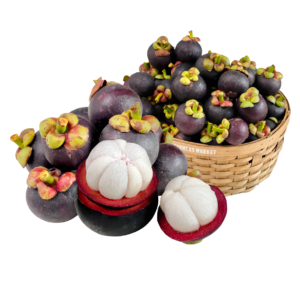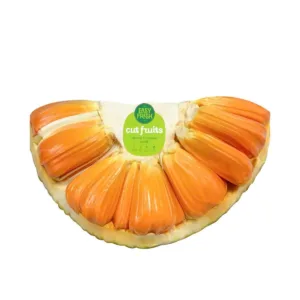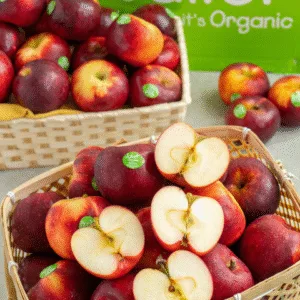news
The Science of Flavor: The Magic of Spices in Global Cuisine
Spices, in their powdered, whole, or ground forms, are the soul of the kitchen. They are the alchemists of flavor, transforming simple ingredients into complex, aromatic, and unforgettable dishes. From the fiery kick of a chili pepper to the warm sweetness of cinnamon, spices have shaped human history, driven exploration, and defined the culinary identity of cultures across the globe. This comprehensive article will delve into the magical world of spices, exploring their fascinating history, their role in creating iconic dishes, and the science behind the flavors and aromas that tantalize our senses.
The journey of spices is a tale of trade, conquest, and discovery. For centuries, spices were considered more valuable than gold, with empires rising and falling on the back of their control over spice routes. The search for a direct route to the Spice Islands led to the Age of Exploration, forever changing the map of the world. Spices were not just for flavoring food; they were used for medicine, perfume, and as a form of currency. This rich history is a testament to the power and allure of these tiny but mighty ingredients.

A Global Flavor Palette: Iconic Spice Blends
Spices are rarely used in isolation. It is the art of blending them that unlocks their true potential, creating complex and harmonious flavor profiles that are the signature of a cuisine.
Garam Masala (India): This iconic Indian blend, meaning “warm spice,” is a staple in Northern Indian cooking. It is a harmonious mix of cinnamon, cloves, cardamom, cumin, coriander, and black pepper. The blend is often roasted before grinding to intensify the flavors, and it adds a beautiful warmth and depth to curries, stews, and lentils.
Ras el Hanout (North Africa): The name of this Moroccan blend translates to “head of the shop,” implying that it contains the very best spices a merchant has to offer. There is no single recipe, and it can contain dozens of spices, including rosebuds, cinnamon, cardamom, nutmeg, and turmeric. It is used to add a complex, aromatic depth to tagines and stews.
Five-Spice Powder (China): This classic Chinese blend is a perfect example of balancing five key flavors: sweet, sour, salty, bitter, and savory. It is made from a precise combination of star anise, cloves, Chinese cinnamon, Szechuan peppercorns, and fennel seeds. It is a perfect rub for roasted meats and a key ingredient in many marinades.
Za’atar (Middle East): This versatile blend is a mix of dried thyme, marjoram, or oregano, toasted sesame seeds, and sumac. It is a staple in Middle Eastern cooking, used as a rub for meat, a topping for flatbread, or a seasoning for vegetables. The sumac adds a beautiful tangy, lemony flavor.

The Science of Sensation: How Spices Work
The magic of spices is rooted in chemistry. The flavors and aromas we perceive are a result of volatile organic compounds, which are released when spices are heated or crushed.
Capsaicin and the Sensation of Heat: The heat we feel from a chili pepper is not a taste but a pain signal sent to the brain by the compound capsaicin. The Scoville scale, which measures the pungency of chili peppers, is a testament to the power of this compound.
Terpenes and Aromatics: Many spices, such as cinnamon, cloves, and rosemary, get their characteristic aromas from compounds called terpenes. These compounds are a natural defense mechanism for the plant, but for us, they are the source of delicious smells and flavors.
Spices in Medicine and Beyond
For centuries, spices have been used not just for flavor but for their medicinal properties. Modern science is now catching up with traditional wisdom, confirming many of these benefits.
Turmeric: The golden spice of Indian cuisine, turmeric, contains a powerful anti-inflammatory compound called curcumin. Studies have shown it may help to reduce inflammation and oxidative stress, and it is a key ingredient in many traditional medicines.
Ginger: Ginger, a rhizome with a spicy, pungent flavor, has been used for centuries to treat nausea and motion sickness. It is also a powerful anti-inflammatory and a source of antioxidants.
Cinnamon: Cinnamon is not just for desserts. It has been shown to have anti-inflammatory and antioxidant properties, and some studies suggest it may help to regulate blood sugar levels.

Practical Guide to Using and Storing Spices
To get the most out of your spices, a few simple rules can make all the difference.
Buying and Storing: Buy spices whole and in small quantities whenever possible. Whole spices retain their freshness and flavor for much longer than their ground counterparts. Store them in airtight containers, away from heat and light, to preserve their volatile oils.
Toasting and Tempering: To unlock the full flavor of your spices, try toasting them in a dry pan over low heat until they become fragrant. This process, known as tempering, is a crucial step in many cuisines, particularly Indian cooking, and it can elevate a dish from good to great.
In conclusion, spices are the unsung heroes of the culinary world. They are a bridge between history and the present, a tool for health and wellness, and an infinite source of flavor and aroma. By understanding their history, their chemistry, and their proper use, we can elevate our cooking to a new level, transforming every meal into a delicious and memorable experience.


